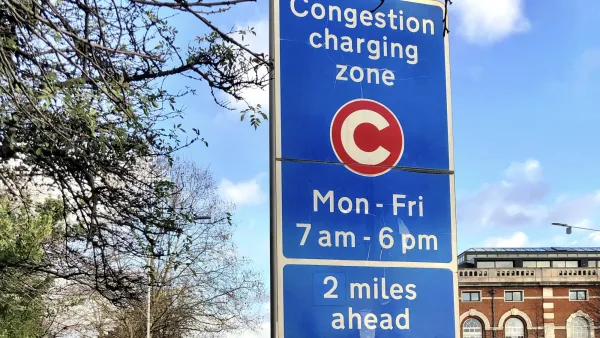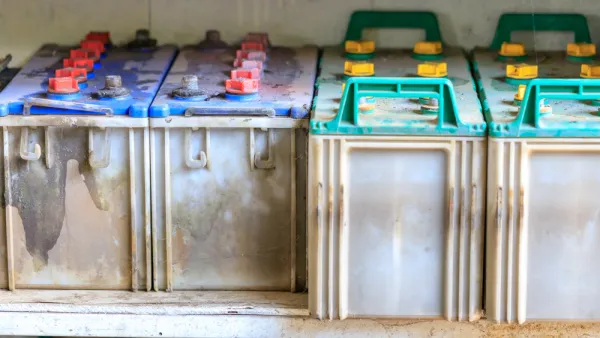The answer depends on location, according to previous studies on EVs. The study from NBER evaluated both gas and electric-powered vehicles to determine their effect on the environment. A surprising recommendation is a new road funding option.
The June "working paper" by the National Bureau of Economic Research, "a private, nonprofit, nonpartisan research organization dedicated to promoting a greater understanding of how the economy works" according to its website, is similar to earlier studies that compare tailpipe emissions from gasoline-powered vehicles with emissions from power plant smokestacks required to generate the electricity to power electric vehicles (EVs).
As other studies have found, the most important factor in the comparison is the power source for the power plants. If it's coal, the pollutants associated with are greatly increased. But the paper by Stephen P. Holland, Erin T. Mansur, Nicholas Z. Muller, and Andrew J. Yates goes an important step further - it rates the environment benefit of EVs with the federal subsidy, technically a tax credit of $7,500 received by those who purchase these zero emission vehicles.
"The researchers focused on five major pollutants: carbon (CO2), sulfur dioxide (SO2), nitrogen (NOx), particulate matter (PM 2.5), and volatile organic compounds (VOCs)," writes Eric Jaffe, senior associate editor at CityLab.
Jaffe goes into the details of how emissions were measured and the damage they cause. Two maps illustrate the varying degrees of environmental harm associated with each vehicle, though it's obvious that more damage is associated with EVs.
That said, EVs make sense in specific areas. "Some places, like Los Angeles, are big EV winners," writes Jaffe. "The city’s air shed traps pollutants from gas cars, leading to local smog; meanwhile, electricity is drawn from a clean grid in places like Nevada, so the environmental damage is both remote and minimal."
On the flipside you have a typical county in South Dakota, where gas cars are relatively cleaner. There the damage done by pollutants on the sparse local population is minimal; electricity, drawn from coal-fired plants in denser places like Illinois, is dirty by comparison.
Study findings:
- “So even in the most extreme areas, the existing subsidy—let alone the additional state incentives—are not justified by the environmental benefits to air pollution,” says Holland. The subsidy the Los Angeles EV should receive is less than $5,000, they determined.
- "EVs actually produced more environmental damage than gas cars: Atlanta (-$314), Chicago (-$900) and D.C. (-$1,077), among them," writes Jaffe. "Those negative figures indicate that EVs should be taxed, rather than subsidized. [Italics added]. In non-urban counties that tax rose to an average of $2,200, and in parts of the Midwest it neared $5,000 per car."
Jaffe advises readers to look past the obvious 'are EVs good or bad' question but to recognize that "it’s a reminder that there’s a high social cost of driving everywhere—especially in cities." So we have another, surprising conclusion:
- Endorsement of vehicle-miles-traveled fee applied to all vehicles with an environmental component, which coincidentally, also polls well, as Planetizen indicated when describing a shortcoming in Oregon's new Road Usage Charge program. The VMT fee would reflect the environmental costs associated for both types of vehicles and the region where it is driven.
"The study’s biggest caveat, acknowledged by the researchers, is that they don’t consider a full 'lifecycle' analysis of emissions—so things like making the car, drilling for oil, or transporting coal aren’t included in the environmental costs," adds Jaffe.
Hat tip to Akshai Singh of Sierra Club Transportation listserv.
FULL STORY: Where Electric Vehicles Actually Cause More Pollution Than Gas Cars

National Parks Layoffs Will Cause Communities to Lose Billions
Thousands of essential park workers were laid off this week, just before the busy spring break season.

Retro-silient?: America’s First “Eco-burb,” The Woodlands Turns 50
A master-planned community north of Houston offers lessons on green infrastructure and resilient design, but falls short of its founder’s lofty affordability and walkability goals.

Delivering for America Plan Will Downgrade Mail Service in at Least 49.5 Percent of Zip Codes
Republican and Democrat lawmakers criticize the plan for its disproportionate negative impact on rural communities.

Test News Post 1
This is a summary

Test News Headline 46
Test for the image on the front page.

Balancing Bombs and Butterflies: How the National Guard Protects a Rare Species
The National Guard at Fort Indiantown Gap uses GIS technology and land management strategies to balance military training with conservation efforts, ensuring the survival of the rare eastern regal fritillary butterfly.
Urban Design for Planners 1: Software Tools
This six-course series explores essential urban design concepts using open source software and equips planners with the tools they need to participate fully in the urban design process.
Planning for Universal Design
Learn the tools for implementing Universal Design in planning regulations.
EMC Planning Group, Inc.
Planetizen
Planetizen
Mpact (formerly Rail~Volution)
Great Falls Development Authority, Inc.
HUDs Office of Policy Development and Research
NYU Wagner Graduate School of Public Service




























